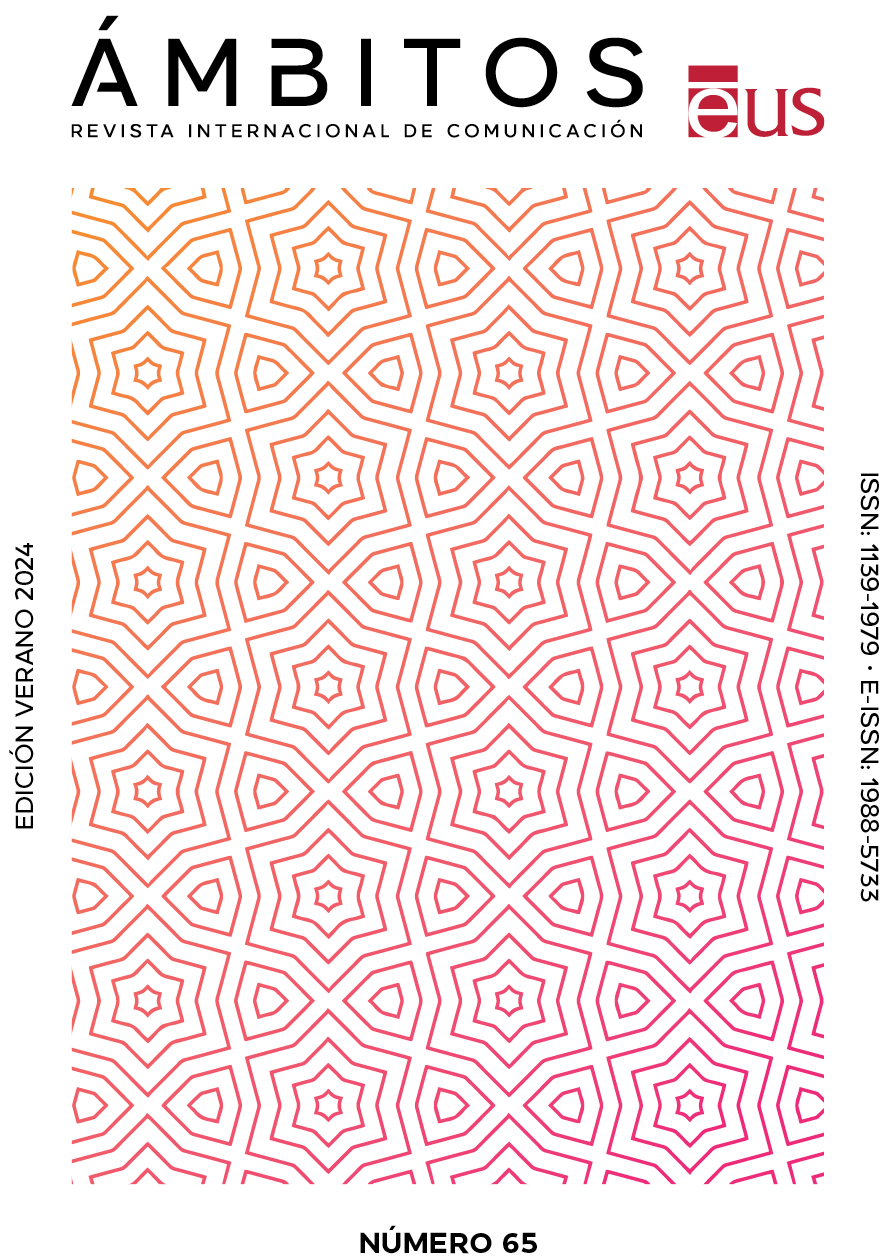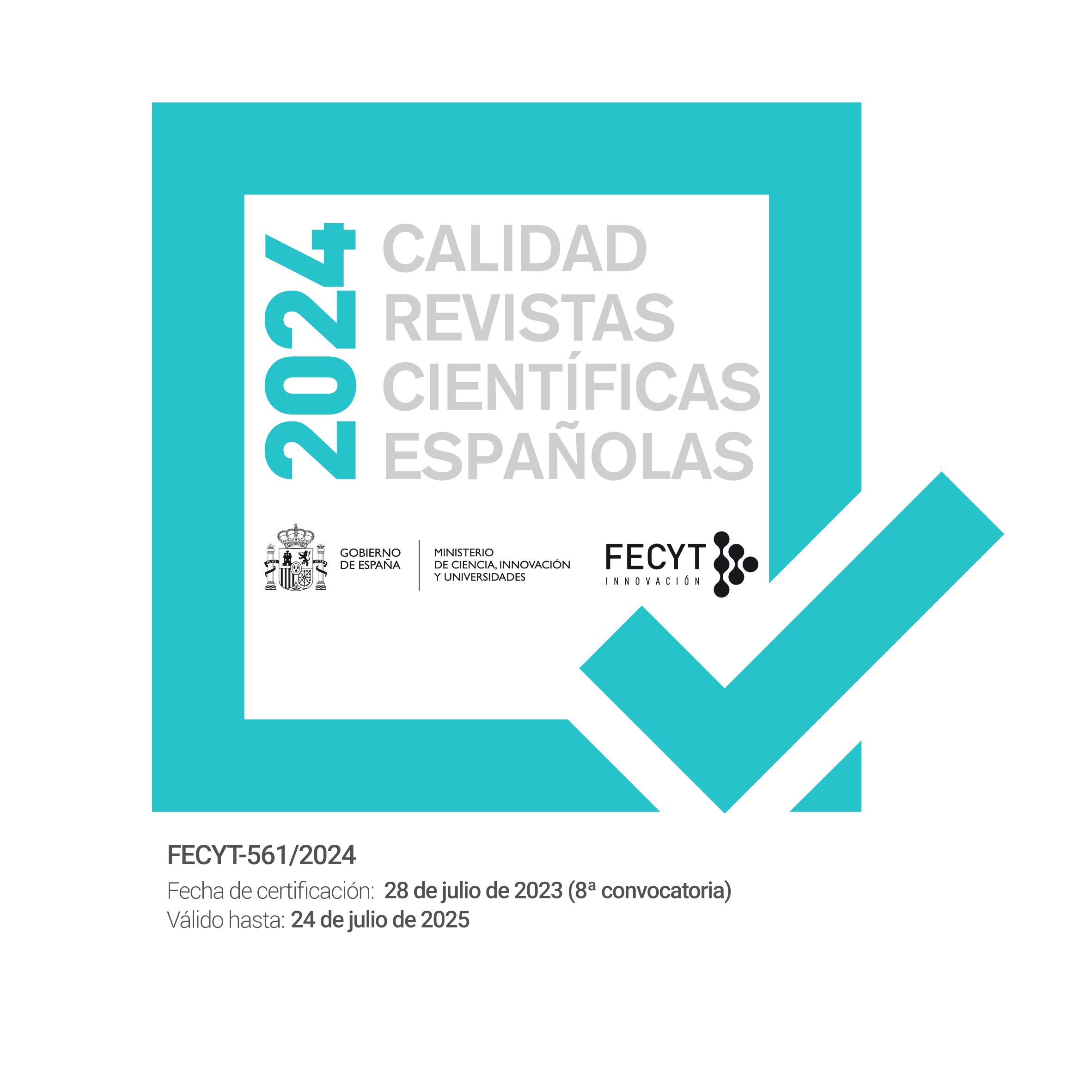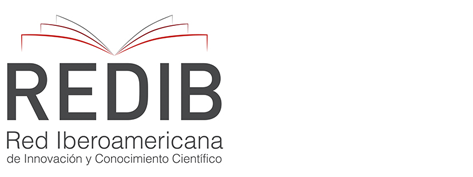Instagrammers adolescentes: creación, hiperexposición de las chicas y participación de la audiencia
DOI:
https://doi.org/10.12795/Ambitos.2024.i65.07Palabras clave:
influencer, Instagram, adolescentes, contenido, interaccionesResumen
Instagram impulsa la cultura digital visual a través de sus propias lenguas vernáculas en la que los instagrammers adolescentes se desenvuelven de forma natural, lo que les convierte en líderes de opinión para millones de seguidores en todo el mundo. Buscan viralizar contenidos con los que fidelizar e incrementar el compromiso de sus seguidores. Para avanzar en la comprensión del marco de producción e interrelación entre influencers y seguidores, se investigan seis instagrammers –tres chicos y tres chicas– de 13, 14 y 16 años con más de 100 mil seguidores durante 18 meses (15/10/21-15/4/23). Mediante metodología cuantitativa-descriptiva, se analizan todas las publicaciones viralizadas durante el tiempo de estudio que alcanzan 583 publicaciones con más de 4M de interacciones. Se estudian sus marcos de producción correlacionados con sus niveles de respuesta en sus seguidores. Los resultados muestran que las instagrammers adolescentes lideran la comunicación en esta red social con mayor número de seguidores, seis veces más publicaciones y 32 veces más interacciones que los chicos. El 69 % de los post los viralizan de lunes a viernes siendo los vídeos los formatos que se correlacionan con los likes que reciben de la audiencia. La exposición de estos menores instagrammers permite vislumbrar la contribución de los progenitores o sus conocimientos de programación de la plataforma, confirman la exigencia de constante viralización de contenidos para lograr la participación de sus seguidores y debería alertar de los posibles riesgos a los que pueden verse expuestos.
Descargas
Métricas
Citas
Balaban, D. C., & Szambolics, J. (2022). A proposed model of self-perceived authenticity of social media influencers. Media and Communication, 10(1), 235-246. https://doi.org/10.17645/mac.v10i1.4765
Balsa-Barreiro, J., Vié, A., Morales, A.J., & Cebrían, M. (2020). Deglobalization in a hyper-connected world. Palgrave Commun, 28(6), 1-4. https://doi.org/10.1057/s41599-020-0403-xç
Bastero (2023). Top 10: niños youtubers que triunfan en España (2023). https://marketing4ecommerce.net/ninos-youtubers-mas-seguidos-espana/
Belanche, D., Flavián, M., & Ibáñez-Sánchez, S. (2020). Followers’ reactions to influencers’ Instagram posts. Spanish Journal of Marketing-ESIC, 24(1), 37-54. https://doi.org/10.1108/SJME-11-2019-0100
Bishop, S. (2019). Managing visibility on YouTube through algorithmic gossip. New Media & Society, 21(11-12), 2589-2606. https://doi.org/10.1177/1461444819854731
Bonilla del Río, M., Castillo Abdul, B., García Ruiz, R., & Rodríguez Martín, A. (2022). Influencers with intellectual disability in digital society: an opportunity to advance in social inclusion. Media and Communication, 10(1), 222–234. https://doi.org/10.17645/mac.v10i1.4763
Caliandro, A., & Graham, J. (2020). Studying Instagram Beyond Selfies. Social Media + Society, 6(2), 1-7. https://doi.org/10.1177/2056305120924779
Christin, A., & Lu, Y. (2023). The influencer pay gap: Platform labor meets racial capitalism. New Media & Society, 1-24. https://doi.org/10.1177/14614448231164995
Coelho, R. L. F., Oliveira, D. S. D., & Almeida, M. I. S. D. (2016). Does social media matter for post typology? Impact of post content on Facebook and Instagram metrics. Online Information Review, 40(4), 458-471. https://doi.org/10.1108/OIR-06-2015-0176
Conti, M., Gathani, J., & Tricomi, P. P. (2022). Virtual Influencers in Online Social Media. IEEE Communications Magazine, 60(8), 86-91. https://doi.org/10.1109/MCOM.001.2100786.
Cotter, K. (2019). Playing the visibility game: How digital influencers and algorithms negotiate influence on Instagram. New media & society, 21(4), 895-913. https://doi.org/10.1177/1461444818815684
data.ai (2022). State of Mobile 2023. https://www.data.ai/en/go/state-of-mobile-2023
De Brito Silva, M.J., de Oliveira Ramos Delfino, L., Alves Cerqueira, K., & de Oliveira Campos, P. (2022). Avatar marketing: A study on the engagement and authenticity of virtual influencers on Instagram. Social Network Analysis and Mining, (12). https://doi.org/10.1007/s13278-022-00966-w
Devos, S., Eggermont, S., & Vandenbosch, L. (2022). Instagram influencers as superwomen: Influencers’ lifestyle presentations observed through framing analysis. Media and Communication, 10(1), 173-184. https://doi.org/10.17645/mac.v10i1.4717
Farivar, S., Wang, F., & Turel, O. (2022). Followers’ problematic engagement with influencers on social media: An attachment theory perspective. Computers in Human Behavior, (133). https://doi.org/10.1016/j.chb.2022.107288
Feijoo Fernández, B., & Fernández Gómez, E. (2021). Niños y niñas influyentes en YouTube e Instagram: contenidos y presencia de marcas durante el confinamiento. Cuadernos.info, (49), 300-328. http://dx.doi.org/10.7764/cdi.49.27309
Gamir-Ríos, J., Cano-Orón, L., & Lava-Santos, D. (2022). De la localización a la movilización. Evolución del uso electoral de Instagram en España de 2015 a 2019. Revista de Comunicación, 21(1), 159–179. https://doi.org/10.26441/RC21.1-2022-A8
García-Marín, D., & Salvat-Martinrey, G. (2022). Viralizar la verdad. Factores predictivos del engagement en el contenido verificado en TikTok. Profesional de la información, 31(2). https://doi.org/10.3145/epi.2022.mar.10
Gibbs, M., Meese, J., Arnold, M., Nansen, B., & Carter, M. (2015). # Funeral and Instagram: Death, social media, and platform vernacular. Information, communication & society, 18(3), 255-268. https://doi.org/10.1080/1369118X.2014.987152
Gil-Quintana, J., & Amoros, M. F. G. (2020). Publicaciones, interacciones, verdades y mentiras de adolescentes españoles en Instagram. Texto Livre, 13(1), 20-44. https://doi.org/10.17851/1983-3652.13.1.20-44
González Oñate, C., & Martínez Sánchez, A. (2020). Estrategia y comunicación en redes sociales: Un estudio sobre la influencia del movimiento RealFooding. Ámbitos. Revista Internacional de Comunicación (48), 79-101. https://doi.org/10.12795/Ambitos.2020.i48.05
Gonzalez-Carrion, E. L., & Aguaded, I. (2020). Procesos de interacción en Instagramers latinoamericanas. El caso de Perú y Colombia durante el 2019. Revista de Comunicación, 19(2), 161-174. http://dx.doi.org/10.26441/rc19.2-2020-a9
Hendricks, A., & Bright, L. (2023). Influencer trends shift: The psychological predictors of influencer engagement on Instagram. The Journal of Social Media in Society, 12(1), 155-180. https://thejsms.org/index.php/JSMS/article/view/1143/625
Keung, J. (2018). Using the Excel pivot table (EPT) function as a research decision support system (DSS): a research note. European Academic Research 6(2), 637-655. https://www.euacademic.org/UploadArticle/3551.pdf
Hyperauditor (2023). https://hypeauditor.com
Interactive Advertising Bureau Spain (IAB, 2022). El Estudio de Redes Sociales 2022. https://iabspain.es/estudio/estudio-de-redes-sociales-2022/
Jiménez-Iglesias, E., Elorriaga-Illera, A., Monge-Benito, S., & Olabarri-Fernández, E. (2022). Exposición de menores en Instagram: instamadres, presencia de marcas y vacío legal. Revista Mediterránea de Comunicación, 13(1), 51-63. https://www.doi.org/10.14198/MEDCOM.20767
Kim, H. (2022). Keeping up with influencers: exploring the impact of social presence and parasocial interactions on Instagram. International Journal of Advertising, 41(3), 414-434. https://doi.org/10.1080/02650487.2021.1886477
Laor, T. (2022). My social network: Group differences in frequency of use, active use, and interactive use on Facebook, Instagram and Twitter. Technology in Society, (68). https://doi.org/10.1016/j.techsoc.2022.101922
Leaver, T., Highfield, T., & Abidin, C. (2020). Instagram: Visual social media cultures. John Wiley & Sons.
Lennox, T. (2020). Social Media Influencers. Research Papers by Undergraduate Students. Paper 2. https://digitalcommons.uri.edu/tmd-research-undergrad/2
Levin, I., & Mamlok, D. (2021). Culture and society in the digital age. Information, 12(68), 1-13. https://doi.org/10.3390/info12020068
Lokithasan, K., Simon, S., Jasmin, N. Z. B., & Othman, N. A. B. (2019). Male and female social media influencers: The impact of gender on emerging adults. International Journal of Modern Trends in Social Sciences, 2(9), 21-30. https://doi.org/10.35631/IJMTSS.29003
Manovich, L. (2017). Instagram and contemporary image. Manovich’s Cultural Analytics Lab in the Qualcomm Institute (UCSD Division of the California Institute for Telecommunications and Information Technology). https://acortar.link/DQmDIh
Martín, T., & Chaves Vázquez, B. (2022). La influencia de Instagram en la creación y reproducción del ideal de belleza femenino. Anuario Electrónico de Estudios en Comunicación Social “Disertaciones”, 15(1), 1-17. https://doi.org/10.12804/revistas.urosario.edu.co/disertaciones/a.11148
Masterson, M. A. (2020). When play becomes work: Child labor laws in the era of “kidfluencers”. University of Pennsylvania Law Review, 169(2), 577-608. https://acortar.link/2hleQC
Meta (2019). How to Take Your Instagram Content to the Next Level. https://www.facebook.com/business/news/insights/how-to-take-your-instagram-content-to-the-next-level
Niederer, S., & Colombo, G. (2019). Visual Methodologies for Networked Images: Designing Visualizations for Collaborative Research, Cross-platform Analysis, and Public Participation. Diseña, (14), 40–67. https://doi.org/10.7764/disena.14.40-67
O’Meara, V. (2019). Weapons of the chic: Instagram influencer engagement pods as practices of resistance to Instagram platform labor. Social Media+ Society, 5(4), 1–11. https://doi.org/10.1177/2056305119879671
Oneto González, G., Pérez Curiel, C., & Riscart López, J. (2020). Efecto del influencer sobre el nivel de engagement en publicaciones de Instagram. Redmarka. Revista de Marketing Aplicado, 24(2), 76-94. https://doi.org/10.17979/redma.2020.24.2.7069
Qustodio (2022). The Qustodio Annual Data Report 2021. Living and learning in a digital world. https://www.qustodio.com/es/research/tiempo-que-pasan-los-menores-conectados-a-las-pantallas/
Rahmayanti, L. C., & Fauzi, L. Z. (2021). The Use of Instagram Social Media as an Interaction Media in Shaping Adolescent Lifestyles. Journal Basic Science and Technology, 10(1), 1-8. https://doi.org/10.35335/jbst.v10i1.2110
Rogers, R. (2021). Visual media analysis for Instagram and other online platforms. Big Data & Society, 8(1), 1-23. https://doi.org/10.1177/20539517211022370
Romney, M., & Johnson, R. G. (2020). Show me a story: narrative, image, and audience engagement on sports network Instagram accounts. Information, communication & society, 23(1), 94-109. https://doi.org/10.1080/1369118X.2018.1486868
Schmuck, D. (2021). Social media influencers and environmental communication. En B. Takahashi, J. Metag, J. Thaker & S. Evans (Eds), The handbook of international trends in environmental communication (pp. 373-387). Routledge.
Segarra-Saavedra, J., & Hidalgo Marí, T. (2020). Futbolistas en Instagram: análisis del marketing de influencia realizado por los capitanes de Primera División en España. Ámbitos. Revista Internacional de Comunicación (48), 34-55. https://doi.org/10.12795/Ambitos.2020.i48.03
Serafinelli, E. (2018). Digital life on Instagram: New social communication of photography. Emerald Group Publishing.
Statista (2023). Most popular social networks worldwide as of January 2023, ranked by number of monthly active users. https://www.statista.com/statistics/272014/global-social-networks-ranked-by-number-of-users/
Suárez-Álvarez, R., & García-Jiménez, A. (2021). Centennials on TikTok: type of video. Analysis and comparative Spain-Great Britain by gender, age and nationality. Revista Latina de Comunicación Social, (79),1-22. https://www.doi.org/10.4185/RLCS-2021-1503
Suárez-Álvarez, R., García-Jiménez, A., & Montes-Vozmediano, M. (2021). Adolescents on YouTube: gender differences regarding the videos they upload and watch. Central European Journal of Communication, 14(29), 321-342. https://doi.org/10.51480/1899-5101.14.2(29).7
Tafesse, W., & Wood, B. P. (2021). Followers’ engagement with instagram influencers: The role of influencers’ content and engagement strategy. Journal of retailing and consumer services, (58). https://doi.org/10.1016/j.jretconser.2020.102303
Thelwall, M., & Foster, D. (2021). Male or female gender-polarized YouTube videos are less viewed. Journal of the Association for Information Science and Technology, 72(12), 1545-1557. https://doi.org/10.1002/asi.24529
Tiggemann, M., & Anderberg, I. (2020). Social media is not real: The effect of ‘Instagram vs reality’ images on women’s social comparison and body image. New Media & Society, 22(12), 2183–2199. https://doi.org/10.1177/1461444819888720
Trevisan, M., Vassio, L., Drago, I., Mellia, M., Murai, F., Figueiredo, F., Couto da Silva, A.P. & Almeida, J. M. (2019). Towards understanding political interactions on Instagram. In Proceedings of the 30th ACM conference on hypertext and social media (pp. 247-251). https://doi.org/10.1145/3342220.3343657
Tur-Viñes, V., Núñez-Gómez, P., & González-Río, M.J. (2018). Kid influencers on YouTube. A space for responsibility”. Revista Latina de Comunicación Social, (73), 1211-1230. https://www.doi.org/10.4185/RLCS-2018-1303en
Van Driel, L., & Dumitrica, D. (2021). Selling brands while staying “Authentic”: The professionalization of Instagram influencers. Convergence, 27(1), 66-84. https://doi.org/10.1177/1354856520902136
Wachler, B. B. (2022). Influenced: The Impact of Social Media on Our Perception. Rowman & Littlefield.
We are social (2023a). Digital 2023 - We Are Social. https://wearesocial.com/es/blog/2023/01/digital-2023/
We are social (2023b). Informe Redes Sociales España 2023. https://wearesocial.com/es/blog/2023/02/reporte-digital-espana-2023/
Yang, C. C. (2016). Instagram use, loneliness, and social comparison orientation: Interact and browse on social media, but don’t compare. Cyberpsychology, behavior, and social networking, 19(12), 703-708. https://doi.org/10.1089/cyber.2016.0201
Yau, J. C., & Reich, S. M. (2019). “It’s just a lot of work”: Adolescents’ self-presentation norms and practices on Facebook and Instagram. Journal of research on adolescence, 29(1), 196-209. https://doi.org/10.1111/jora.12376
Publicado
Cómo citar
Número
Sección
Licencia
Derechos de autor 2024 Rebeca Suárez-Álvarez, Antonio Garícia-Jiménez, María Cruz López de Ayala

Esta obra está bajo una licencia internacional Creative Commons Atribución-NoComercial-CompartirIgual 4.0.
Ámbitos. Revista Internacional de Comunicación es una revista de acceso abierto, lo que significa que todo su contenido está disponible gratuitamente para el usuario o su institución. Los usuarios pueden leer, descargar, copiar, distribuir, imprimir, buscar o enlazar con el texto completo de los artículos, o utilizarlos para cualquier otro fin lícito, sin solicitar permiso previo al editor o al autor. Esta definición de acceso abierto se ajusta a la Iniciativa de Acceso Abierto de Budapest (BOAI).

A menos que se indique lo contrario, todo el contenido de la edición electrónica se distribuye bajo una " licencia internacional Creative Commons Attribution-NonCommercial-ShareAlike 4.0 ". Puede consultar la versión informativa y el texto legal de la licencia aquí. Esto debe indicarse expresamente de esta manera cuando sea necesario.
En caso de aceptación del manuscrito, los autores ceden los derechos de la obra para su publicación a Ámbitos. Revista Internacional de Comunicación bajo el contrato de licencia Reconocimiento-NoComercial-CompartirIgual 4.0 Internacional (CC BY-NC-SA 4.0). Los autores conservan los derechos de autor y terceros están autorizados a copiar, distribuir y hacer uso de la obra, siempre que cumplan con los términos y condiciones establecidos en la licencia.
- Citar la autoría y la fuente original de publicación (revista, editorial y URL de la obra).
- No los utilice con fines comerciales.
- Si remezcla, transforma o crea a partir del material, debe publicar sus contribuciones bajo la misma licencia que el original.
Se puede encontrar más información en https://creativecommons.org/licenses/by-nc-sa/4.0/deed.es
- Resumen 255
- PDF 110
- HTML 5



















